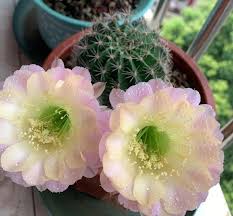Principles of Design for Climate Control in Traditional Chinese Homes

Traditional Chinese architecture is a testament to the wisdom of ancient builders who sought to harmonize human living with the surrounding environment. In particular, the design of traditional Chinese homes was meticulously planned not just for aesthetic appeal but for practical concerns, with a keen focus on adjusting and optimizing the internal climate. Unlike modern homes, which rely heavily on technology and mechanical systems for heating and cooling, traditional Chinese homes used strategic architectural principles to naturally regulate temperature, light, and airflow, ensuring a comfortable living environment year-round.
In this article, we will explore the design principles that were employed in traditional Chinese homes to adjust and regulate the internal climate, focusing on elements like orientation, materials, ventilation, and insulation. These principles were deeply influenced by ancient Chinese philosophies such as Feng Shui, Daoism, and Confucianism, which emphasized balance, harmony, and respect for nature.
1. The Role of Feng Shui in Climate Control
Feng Shui, an ancient Chinese practice that focuses on harmonizing individuals with their environment, played a crucial role in the design of traditional Chinese homes. The positioning of rooms, doors, windows, and even furniture was designed to balance the flow of Qi (life energy) and optimize the energy within the home. But beyond its spiritual and metaphysical applications, Feng Shui also considered the physical environment, including the regulation of climate and airflow.
1.1 Orientation of the House
One of the most important factors in regulating internal climate was the orientation of the house. In traditional Chinese architecture, homes were often positioned to take advantage of natural elements, such as the sun, wind, and natural topography. The house’s front door, for example, was generally oriented toward the south or southeast to allow for maximum sunlight exposure during the winter months while protecting the house from cold, north winds.
This strategic orientation also helped to maximize the flow of warm air into the home while allowing cool air to circulate during hot summer months. In some instances, windows and doors were positioned to take advantage of natural breezes, creating passive ventilation that helped to regulate the internal temperature.
1.2 Site Selection and Topography
The location and surrounding landscape were also important considerations in traditional Chinese architecture. Feng Shui emphasized building homes in locations that benefited from natural features such as mountains and water sources. Mountains to the north were considered protective, sheltering the house from harsh winter winds, while water to the south or east was seen as a symbol of prosperity and vitality.
This thoughtful integration with the environment ensured that traditional Chinese homes were better insulated from extreme weather conditions. By choosing sites with favorable topography, such as near hills or bodies of water, homes could naturally maintain a more stable internal climate throughout the year.
2. Materials and Construction Techniques for Climate Regulation
The materials used in the construction of traditional Chinese homes were essential for regulating the internal climate. The choice of materials directly affected the home’s ability to absorb, retain, or deflect heat, moisture, and air.
2.1 Wood as a Primary Material
Wood was one of the most commonly used materials in traditional Chinese homes, particularly in the construction of roof beams, floors, and walls. Wood has natural insulating properties that help regulate the temperature inside a home. It acts as a barrier to extreme heat during the summer and retains warmth during the winter, ensuring a more stable and comfortable interior climate.
Additionally, wood allows for the natural flow of air within a home, facilitating ventilation. Wooden floors, for example, allowed the air to circulate under the house, creating a natural cooling effect. In more humid regions, wooden structures were also preferred for their ability to absorb excess moisture, preventing the buildup of mold and mildew.
2.2 Tiled Roofs for Insulation
Traditional Chinese homes often featured tiled roofs, which were designed to provide insulation from both heat and cold. Roof tiles, particularly those made from ceramic or clay, provided an effective barrier to heat, reflecting the sun’s rays during the hot summer months and trapping warmth inside the home during colder seasons.
In addition to their practical insulation properties, tiled roofs were also a hallmark of traditional Chinese architecture, symbolizing the stability and permanence of the home. The roof’s design, including its upturned eaves, helped to direct rainwater away from the home, preventing water damage and ensuring the longevity of the building.
2.3 Use of Courtyards for Ventilation and Light
One of the most prominent features of traditional Chinese homes, particularly in the Siheyuan (courtyard houses), was the inclusion of a central courtyard. This open space served multiple purposes, including providing natural light, air circulation, and a buffer against the outside climate.
The courtyard allowed sunlight to penetrate into the interior rooms of the house, particularly during the winter months when sunlight was sparse. Additionally, the presence of an open courtyard allowed cool breezes to circulate through the house in the summer, providing natural ventilation and cooling. Plants and water features, such as small ponds or fountains, were often incorporated into courtyards to enhance the cooling effect and create a tranquil atmosphere.
3. Ventilation Strategies
Traditional Chinese homes were designed to maximize natural ventilation, reducing the reliance on artificial cooling or heating systems. Ventilation was key to regulating both temperature and humidity within the home, particularly in regions with extreme climates.
3.1 Strategic Window and Door Placement
The positioning of windows and doors was critical in maintaining the natural flow of air and temperature regulation in traditional Chinese homes. Windows were often placed high on walls to allow warm air to escape during the summer months and help cool down the interior. In contrast, smaller, lower windows allowed for air to flow in without allowing the heat from the outside to enter.
The placement of doors also contributed to air circulation. Double doors were commonly used in larger rooms, allowing for cross-ventilation. Additionally, some homes featured openings or grills in the door and window frames, allowing air to flow freely and preventing stagnant air from accumulating.
3.2 The Role of Overhangs and Eaves
The overhangs or eaves of a traditional Chinese house were not merely decorative but served an important functional purpose in climate control. The wide eaves, often seen in roof design, were essential in protecting the house from both the heat of the sun and the intensity of rainfall. The eaves helped to keep the interior cool during the summer by blocking direct sunlight and provided shelter from rain, ensuring that water did not damage the house’s walls and foundation.
During the winter months, the eaves helped to trap heat inside the house by providing an insulating effect. At the same time, they ensured that the house was not exposed to the bitter cold winds, which were typically blocked by the upturned roof design.
4. Water and Climate Regulation
In traditional Chinese architecture, the element of water played an important role not only in aesthetics but in regulating the climate. Water was used in both outdoor and indoor spaces to provide a cooling effect and promote balance.
4.1 Water Features in Courtyards and Gardens
Water features, such as ponds, streams, and fountains, were often incorporated into the courtyards or gardens of Chinese homes. These water features had a cooling effect, particularly during the summer months, as they helped to regulate the temperature around the house. The sight and sound of flowing water also contributed to the calming and harmonious atmosphere, in line with the principles of Feng Shui.
Additionally, water was often used to create a sense of tranquility and to foster good health. Small ponds and fountains were believed to promote positive Qi flow and help attract prosperity.
4.2 Indoor Water Features
In some traditional Chinese homes, small indoor water features were included in the design, particularly in rooms where relaxation or study took place. These water features not only provided cooling but also acted as a source of Feng Shui energy, promoting harmony and well-being.
5. Conclusion
The design principles of traditional Chinese homes reflect a deep understanding of climate control and the natural environment. By using strategic orientation, the selection of materials, ventilation systems, and water features, ancient Chinese architects were able to create homes that maintained a comfortable internal climate year-round without the need for modern technology.
These homes were not only functional but also reflected a profound connection to nature, offering a balanced, harmonious living environment for their inhabitants. Today, these principles continue to influence contemporary Chinese architecture and provide valuable lessons in sustainable design and climate-responsive building practices.

